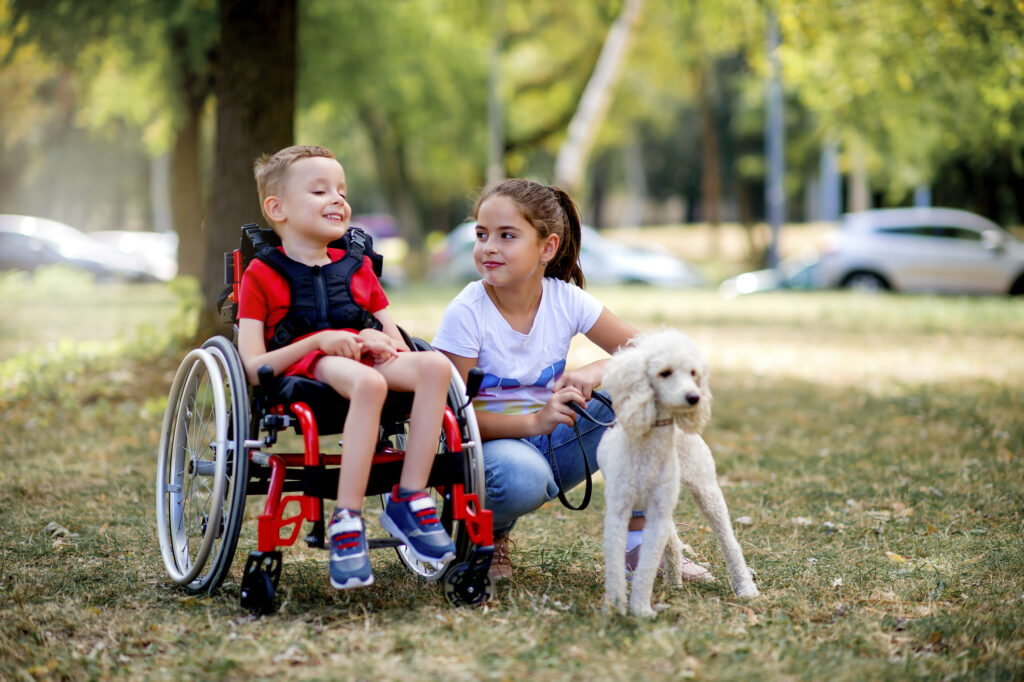As states explore back-to-school remote or in-person learning options, they are developing strategies to meet the needs of children and youth with special health care needs (CYSHCN) in their education and public health systems. These approaches include:
- Developing risk assessment tools for children and families;
- Increasing staffing to ensure physical distancing;
- Enhancing collaboration between education and health care providers; and
- Closely evaluating any potential learning losses as a result of remote learning.
Background
COVID-19 poses an increased health risk for children with chronic and complex health needs who oftentimes have multiple health conditions and can rely heavily on hospital-based services, such as specialty care, elective surgeries, and specialized therapies. In many cases, health providers have postponed these health services to meet the immediate needs of the pandemic.
About 20 percent (14.6 million) of US children and youth have a chronic or complex health care need that require health care services and supports beyond what children normally require. Rates are higher across racial and ethnic demographics, with about 25 percent of non-Latinx Black children and youth reporting special health care needs, for example. As schools transitioned to remote learning last spring to protect students and employees from COVID-19, CYSHCN who often rely on school settings for occupational and behavioral therapies faced disruptions in access to care. Racial and ethnic minority CYSHCN who face lower rates of health care access and increased rates of fragmented care have been disproportionately impacted by school transitions.
Brown and Black CYSHCN who have lower rates of health care access and increased rates of fragmented care have been disproportionately impacted by school transitions.
State officials continue to face many difficult public health and budgetary concerns as they evaluate plans for remote or face-to-face physical instruction. These decisions are further complicated as COVID-19 cases among children rise and new research emerges about how the virus is transmitted by children. National and federal guidance has supported the safe re-opening of schools when infections levels are low regionally.
- The American Academy of Pediatrics (AAP) issued a statement on June 25, 2020, supporting the reopening of schools, citing the fundamental role schools play in supporting social and emotional skills, safety, reliable nutrition, academic enrichment and, physical, speech, mental, health therapy.
- The Centers for Disease Control (CDC) has also issued guidance in support of schools opening for physical instruction under safe circumstances. As states and school districts make decisions about reopening, they are developing policies and processes for how they will do so and whether children will attend class in-person, remotely, or some combination.
- John’s Hopkins University is tracking school reopening plans, and finds that all 50 state boards of education and 13 national policy organizations have to date issued policy guidance about reopening K-12 schools.
As states act on these guidelines, families, particularly families of CYSHCN, face the difficult decision of whether or not their children will be able to safely attend school in person. To help families and providers in their shared decision making, Florida’s state Title V CYSHCN program developed a bilingual (English and Spanish) Back-to-School Checklist. This tool was based on a survey that the state Title V CYSHCN program conducted with families. The tool is being distributed to families, care coordinators, family practitioners, and pediatricians across the state. The tool allows families, in consultation with providers, to:
- Assess their children’s risk of contracting COVID-19;
- Consider other household members’ risk;
- Evaluate socio-emotional factors, such as mood and behavior, food insecurity; and
- Examine whether families have access to additional services and supports, such as speech therapy.
Other state strategies to protect and support CYSHCN during school reopenings include increased staff support, increased communication and collaboration between schools and health systems, and evaluation of the impact of school closures on CYSHCN.
Maryland’s school reopening plan directs school health specialists to provide training and technical assistance to staff explaining how to best care for CYSHCN in the form of large group health education and one-on-one consultations. The state’s plan also encourages strong collaboration among school health specialists, school counselors, social workers, and medical teams to support the needs of CYSHCN and their families.
California recommends that schools increase staffing to ensure physical distancing for elementary age children with special needs. New Jersey’s reopening plan recommends investments in additional cleaning staff for therapy rooms for those districts that serve children with medical complexity (CMC). The state’s policy also recommends targeted evaluations to address any losses in critical skills and Individualized Education plan (IEP) goals during remote instruction.
While states and localities are faced with budget challenges due to the economic impact of COVID-19, ensuring that the specific needs of CYSHCN are being met in schools can help prevent health complications and educational losses among CYSHCN, which could have long-term cost implications for states. Many states are utilizing funding from the CARES Act as well as other federal funds to implement school-based health and educational safeguards similar to the ones mentioned above. Congressional action concerning additional COVID-19 relief will be crucial in how states continue to modify their education and public health systems to meet the specific needs of CYSHCN.
In the coming transition of children and youth back to in-person learning, it will be important for states to consider the following, particularly for CYSHCN:
- How will school-based services support CYSHCN enrolled in Medicaid as they return to in-person learning and what innovations are states considering to bolster these services?
- Will telehealth play a greater role in connecting CYSHCN in school-based settings to therapies and supports?
- What are strategies for measuring the short- and long-term impacts of disruptions in health and education supports for CYSHCN due to school transitions to remote learning?
- What data is available at the local, school district level to track the prevalence of COVID-19 cases among pediatric populations to help track any outbreaks as a result of in-person learning?
- How are state and local education and public health agencies coordinating to prepare for the needs of children and their families affected by COVID-19?
The National Academy for State Health Policy will continue to monitor state back-to-school policies, state public health efforts to address potential cases of COVID-19 in school settings, and the implications for CYSHCN and their families.


